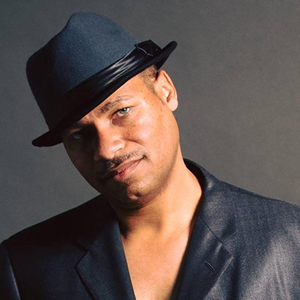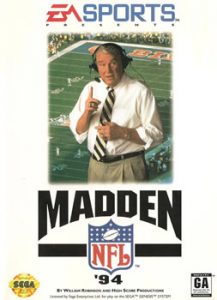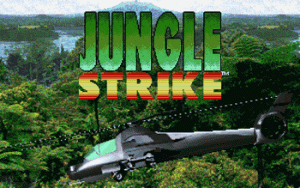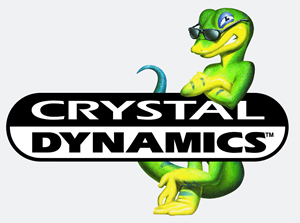 Tony Barnes has been involved with some of the most recognizable game franchises out there. From his work on EA’s legendary Strike and Madden series to rebooting classics like Capcom’s Strider, there isn’t much in console gaming that he hasn’t worked on over the past 30 years.
Tony Barnes has been involved with some of the most recognizable game franchises out there. From his work on EA’s legendary Strike and Madden series to rebooting classics like Capcom’s Strider, there isn’t much in console gaming that he hasn’t worked on over the past 30 years.
Barnes grew up in San Francisco, a place he found heavily involved in game development. He got an early start in game-making, and published his first title, Escape from Hell, in 1988. By 1992 he landed at Electronic Arts, sparking a long and prolific career in the industry. He went on to tenures at Crystal Dynamics, Rockstar Games, and other developers before starting his own studio, RetroNinja, in 2020. Barnes also received the Jerry Lawson Lifetime Achievement at the Game Development Conference in 2019.
Me. Barnes was kind enough to chat with Sega-16 about his work on the Genesis.
Sega-16: Before arriving at EA, you had experience working on Atari’s line of computers and at Britannica Software. What was it like coming to EA, which was a much larger company?
Tony Barnes: I actually started my career making games circa 1983, on the Apple II. I was too poor to have any sort of computer, so I would write programs on binderpaper, in class, then type in on the school computers. Later, I would do the same, except walk to my friend’s house, three miles away, and type away on his Atari 800. Eventually, I sold enough games to buy my own Atari 1200XL, but I couldn’t afford a disc drive until much later. Going from smaller publishers/developers to EA was an interesting transition. They had big fancy offices, fancy cubicles, lots of support staff and it took me three weeks to get a garbage can (laughs). The thing that EA taught me in those early days was discipline, procedures and protocol. When you’re an independent developer or at a much smaller place, you can “wing” a lot of things and fumble your way through. You don’t think very hard about the business side of things. You “might” think about the customer, but mostly you’re just thinking, “here’s a game I want to make…” At a place like EA, where there were hundreds of thousands of dollars, then and hundreds of millions, now, you need to quickly learn discipline and be more market-focused.
Sega-16: What was your role with the Madden series?
 Tony Barnes: Even though my primary job was the Strike Series, I always found time to spend on other products in the studio, especially if it was during down-time between Strikes. I’d known the developers at Visual Concepts, since they were five people in a loft in San Francisco, so it was natural to jump on and do production work on Bill Walsh College Football and Madden ’94. Primarily, my job was what I call “advanced plate spinning” or producing. I made sure the developers had what they needed from us (EA) and the licensor (NFL/NFLPA) and made sure that the developers were adhering to what the licensor wanted, as well as the quality we expected for an EA Sports game. Lots of late nights playing Madden, which isn’t always as fun as it sounds… especially if things are broken or even-worse; if you’re looking for something broken to happen but can’t reproduce it. Back in those days, we couldn’t build in as many debug and analytics as you can today, especially on itty-bitty cartridges.
Tony Barnes: Even though my primary job was the Strike Series, I always found time to spend on other products in the studio, especially if it was during down-time between Strikes. I’d known the developers at Visual Concepts, since they were five people in a loft in San Francisco, so it was natural to jump on and do production work on Bill Walsh College Football and Madden ’94. Primarily, my job was what I call “advanced plate spinning” or producing. I made sure the developers had what they needed from us (EA) and the licensor (NFL/NFLPA) and made sure that the developers were adhering to what the licensor wanted, as well as the quality we expected for an EA Sports game. Lots of late nights playing Madden, which isn’t always as fun as it sounds… especially if things are broken or even-worse; if you’re looking for something broken to happen but can’t reproduce it. Back in those days, we couldn’t build in as many debug and analytics as you can today, especially on itty-bitty cartridges.
Sega-16: Why do you think the series became so popular on the Genesis even though it was released on the SNES as well? Do you think it was a hardware issue or something else?
Tony Barnes: I think part of it was the market that Sega captured. They immediately went after an older market than Nintendo. A market that were into sports, much more than Nintendo’s market. Additionally, EA didn’t do many Nintendo carts back in those days and many of the SNES versions of games were ports. Some were done “in-house,” like the Madden and College Football I worked on, which helped with quality control.
Sega-16: How did you become involved with the Strike series? What aspects did you work on?
Tony Barnes: Greg Thomas, of Visual Concepts, was a good friend of mine at the time. He contacted me and said, “EA is looking for a designer that has a coding background and can also do some art. Are you interested?” I screamed and immediately jumped at the chance! That chance was what eventually became Desert Strike and the entire Strike series. Prior to me coming on board, the majority of the design and implementation was on John Manley. When I came on, I took over the majority of the implementation, while John and I tag-teamed the design. John would come up with the overall plot and high-level scenarios, then the both of us would figure out the layout on graph paper. Once we were golden on what was going to happen in a particular mission, I’d dive into code and the tools and implement the whole thing. Everything you see in Strike (Desert and Jungle) was laid out by hand, hand-code to run the enemies and NPCs and hand-tweaked. In addition to design and implementation, I directed the music, and did pixel work on Jungle and Urban Strike. Later on, I completely gutted Nuclear Strike and remade it from the ground up, for the Nintendo 64. Nuke 64 IS NOT… I repeat IS NOT a port of Nuclear Strike. It really is more like Jungle Strike 1.5.
Sega-16: Jungle Strike was a major improvement over the original, changing the location and increasing the amount of vehicles and weapons. Could you give some detail about how the plans for the sequel came about?
Tony Barnes: Really, all we did was change the color palette from orange to green and said, “GO!” (laughs). But seriously, our plan all along was not only to out-do the previous game but to make each game a companion to the others. So, we picked a location that had bad guys (fictitious South American drug lord, instead of fictitious Middle Eastern dictator) and then listened to what players said, which was a LOT harder to find out back then! We kept a list of “likes” and “dislikes” and set out to address those in the core of the design and play mechanics. Additionally, about half-way through development, the execs came and let us know that we’d be getting twice the cart size for the sequel… with NO additional time… Oh joy. That was a tough crunch. Basically living at the office, going to sleep around 1 a.m., sleeping in conference rooms, then waking up at 7 a.m. and starting the entire thing over.
Sega-16: The series evolved considerably with each installment. Which one was your favorite?

Tony Barnes: I’d say my favorite definitely is Jungle Strike. That was the one where I feel we hit all the marks, very little friction in that one, very little that wasn’t “right.” It was also such a big leap over the previous game. Jungle definitely has the most of “me” in it, so it’s my favorite.
Sega-16: Crüe Ball was a game that doesn’t get talked about enough. What did you think about a game based around a heavy metal band? Was there much support for it when it was conceived?
Tony Barnes: I loved Crüe Ball! Yeah, a LOT of the games I worked on, in those early days don’t get enough love; Crüe Ball, General Chaos, even Harley’s Humongous Adventure were all fun little games. When I came on board, Crüe Ball was named Twisted Flipper and was in full swing of development. I thought it was cool, because I was a Crüe (and metal in general) fan and a huge fan of Devil’s and Alien Crush pinball games. It was fun to play and I was so excited to even be in the building, so I would work on those games, well into the night. As for internal support, there was hardly any, to be honest. Richard Robbins was the producer on those games and he had only two associate producers underneath him: Michael “Skippy” Lubuguin and John Manley. With Desert Strike heating up, they needed more hands, to handle the TONS of third party games Robbins had going AND the internal ones. I was happy to pitch in, but really the execs should’ve given Robbins more staff earlier. I guess I’m actually lucky they didn’t.
Sega-16: Do you know if anything was left out or if there had been plans for a sequel?
Tony Barnes: A sequel for Crüe Ball? Not that I know of… but back then, unless it was a franchise, like the sports stuff, no sequels were guaranteed. Hell, they only greenlit a sequel to Desert Strike after it had sold like hotcakes, in the first few months. As far as things left out… sure, there are ALWAYS things left on the cutting room floor. Songs, levels, bosses, etc.
Sega-16: Were you involved with any SNES game development? If so, how did the process compare to making games for the Genesis?
Tony Barnes: I worked on several SNES games over the years. The hardware has its ups and downs, just like anything. I love the color palette and sprites, but I prefer the resolution, higher CPU speed and the sound chip(s) on the Genesis. The SNES always seemed to run slower unless you were building something specifically for the 65C81 vs. the 68000 chipset in the Genesis. EA had proprietary tools for art and debug kits, so interfacing from your Mac was the same… but what you could do with the pixels, how many of them and how fast, were rather different.
Sega-16: Based on your work on both the Genesis and SNES hardware, do you think the Genesis offered any hardware advantages for Madden over the SNES?
Tony Barnes: Well, on paper, the the SNES would actually be better suited for something like Madden, with its ability to display more sprites and Mode 7 for the playfield. Ultimately, the Genesis’ vastly faster CPU and the fact that the engine was made initially for the Genesis and its 68000, is in my opinion, better. Also, the resolution on the Genesis allowed for crisper and a better aspect ratio, for the graphics. If you look at the SNES ports of Madden and The Strike Series, you’ll notice they run slower (the CPU issue) and the graphics look “fatter” (the resolution issue). Also, while the SNES had a superior sound chip for certain types of music, like “orchestral” music, any music that was percussion-based or was meant to have a “gritty” sound, was better on the Genesis. Again, check out something like the Desert Strike port. The music on the Genesis sounds like a 16-bit rockin’ guitar approximation. The music on the SNES sounds like an elevator music version.
Sega-16: You left EA for Crystal Dynamics, a company that had made a name for itself on next-gen consoles with the 3DO. What was it like moving over from primarily 2D games to 3D?
 Tony Barnes: Well, the first things I worked on at Crystal Dynamics was a 2D Ghost Rider game, as well as the port of Gex from 3DO to Saturn and PlayStation. After the Ghost Rider game was put on ice, I dabbled a bit on the port/remakes of Off-World Interceptor and Turbo Solar Eclipse for the PlayStation. Ultimately, I was put onto Legacy of Kain, which was also 2D. So, I didn’t really have to jump head-first into 3D, for a while. But I had already been exploring 3D for a while, anyway. Preproduction for (what became) Future Strike and Soviet Strike were already well underway before I left. Those games were 3D (or 2.5D if you will). I had already known some 3D, having done 3D modeling and beta-testing for 3DStudio; not “Max”… just 3DStudio 1.0 on DOS, back in the ’80s. But I really didn’t have to embrace and master the transition from 2D to 3D, until ’97, when I went to Psygnosis and worked on a bunch of 3D games that never saw the light of day, including a Wipeout sequel.
Tony Barnes: Well, the first things I worked on at Crystal Dynamics was a 2D Ghost Rider game, as well as the port of Gex from 3DO to Saturn and PlayStation. After the Ghost Rider game was put on ice, I dabbled a bit on the port/remakes of Off-World Interceptor and Turbo Solar Eclipse for the PlayStation. Ultimately, I was put onto Legacy of Kain, which was also 2D. So, I didn’t really have to jump head-first into 3D, for a while. But I had already been exploring 3D for a while, anyway. Preproduction for (what became) Future Strike and Soviet Strike were already well underway before I left. Those games were 3D (or 2.5D if you will). I had already known some 3D, having done 3D modeling and beta-testing for 3DStudio; not “Max”… just 3DStudio 1.0 on DOS, back in the ’80s. But I really didn’t have to embrace and master the transition from 2D to 3D, until ’97, when I went to Psygnosis and worked on a bunch of 3D games that never saw the light of day, including a Wipeout sequel.
Sega-16: How did you find the Saturn hardware? Many developers recognize its capabilities but found it hard to work with in some regards. Was that your experience as well?
Tony Barnes: I didn’t spend much time with the Saturn hardware at Crystal Dynamics. We had some games on the go; like Off World Interceptor and Turbo Eclipse, as well as the (cancelled) Ghost Rider game that was meant to be Saturn-first. There were others later, but we quickly pivoted away from the Saturn, when the sales of PSX (PlayStation) started taking off. From my memory, it was kind of a pain in the ass when it came to 3D implementation. The machine really wasn’t built with “3D-first.” That’s one of the reasons Ghost Rider was going more the 2.5D route, with pre-rendered characters and 3D side-scrolling backgrounds, instead of attempting some sort of fully-3D or even full 3D characters.
Sega-16: Do you have any anecdotes from your Genesis days you’d like to share with our readers?
Tony Barnes: If you look closely at the Jungle Strike box, you’ll notice there’s no “Sega Seal of Quality.” I can’t remember exactly what got us bounced from that, but EA’s deal was such that they could just ship the game without the seal. Sega were saying how the lack of seal would affect the sales (which I’m pretty sure it didn’t), but the really funny part is that the marketing person handling the box art said, “no seal?! Cool! It was throwing off the balance on the banner, anyway!” (laughs)
Our thanks to Mr. Barnes for taking the time for this interview.

Recent Comments